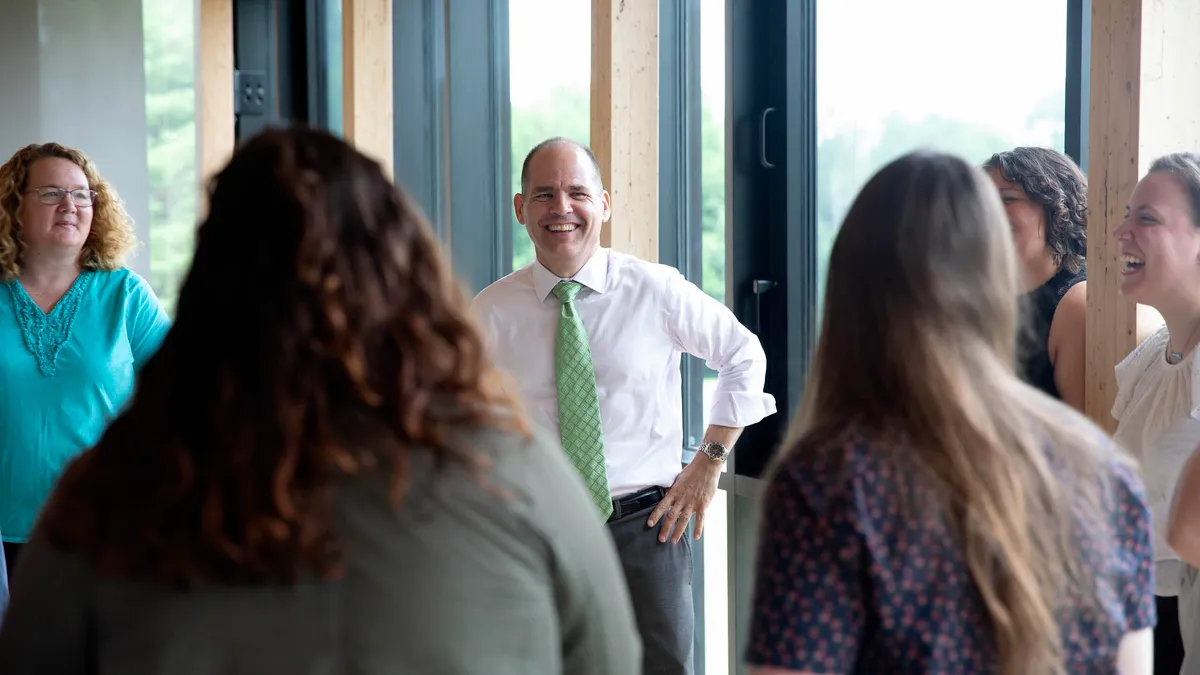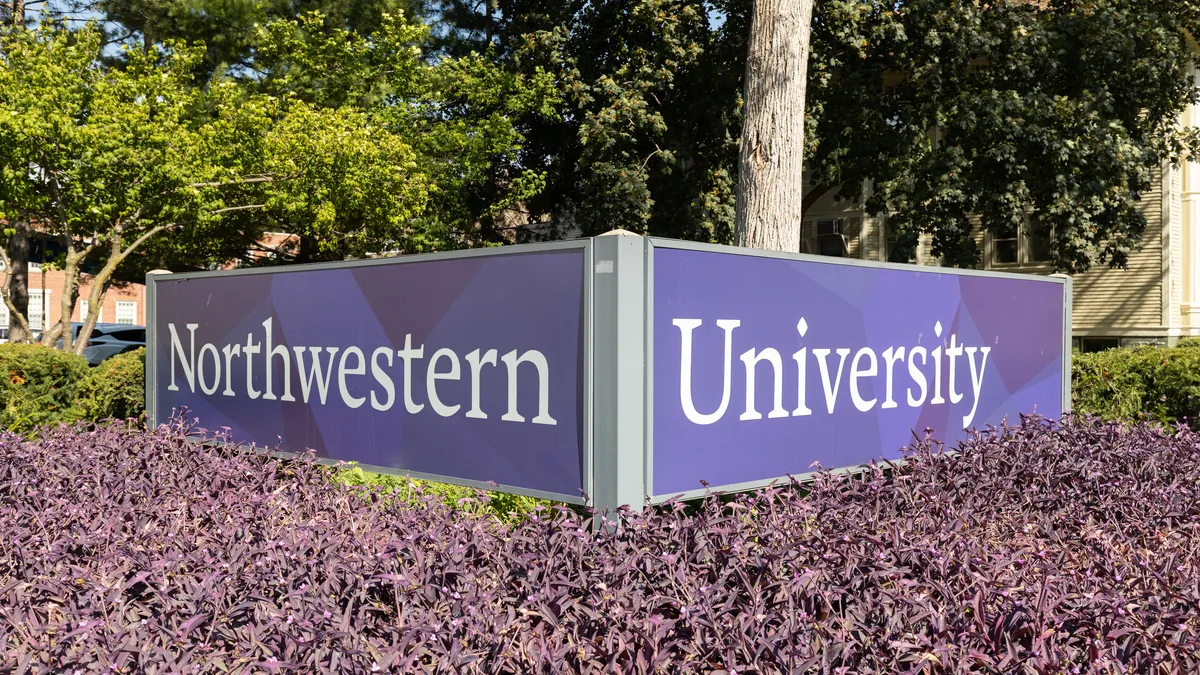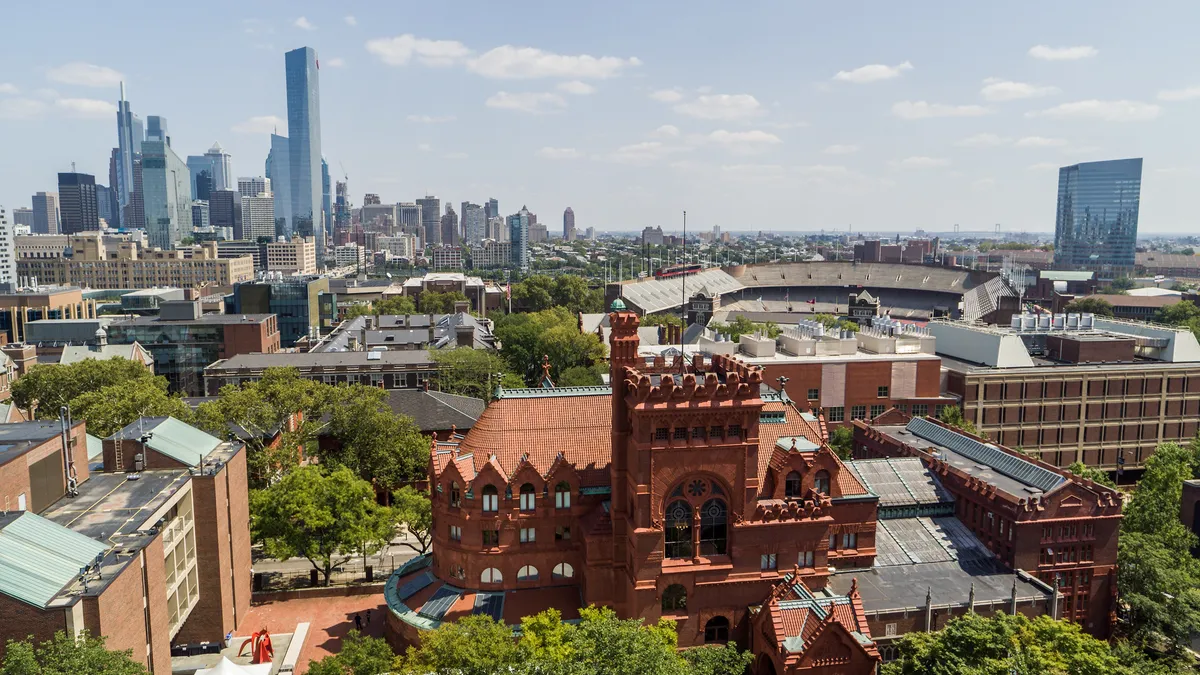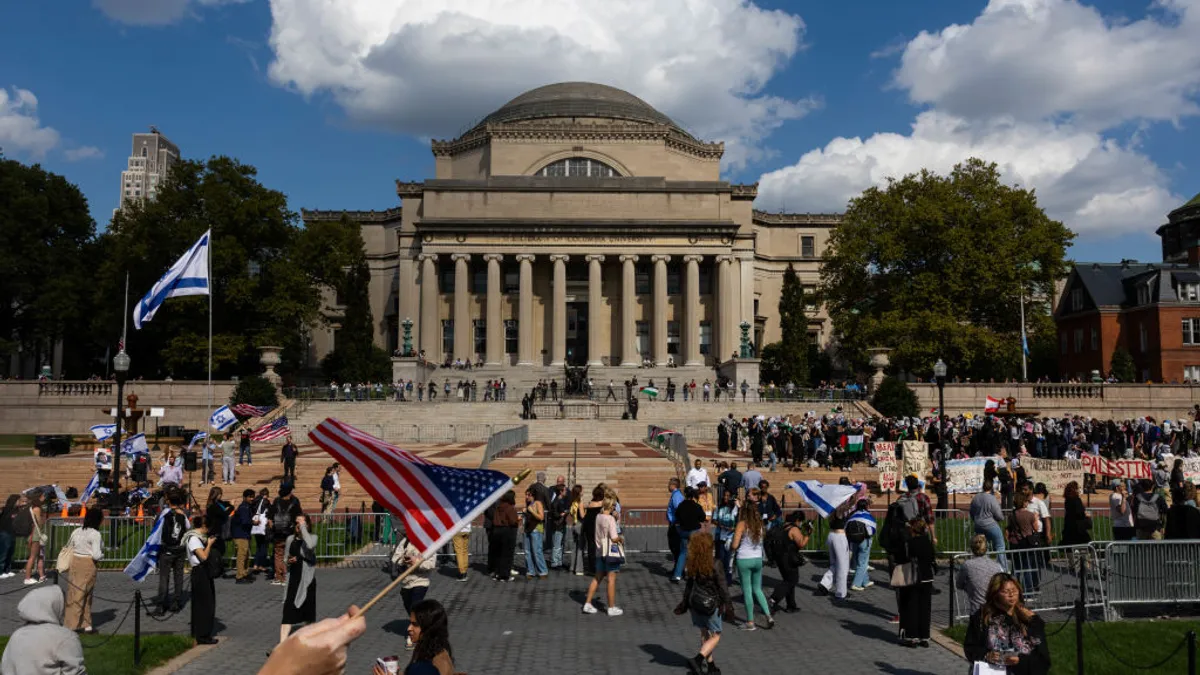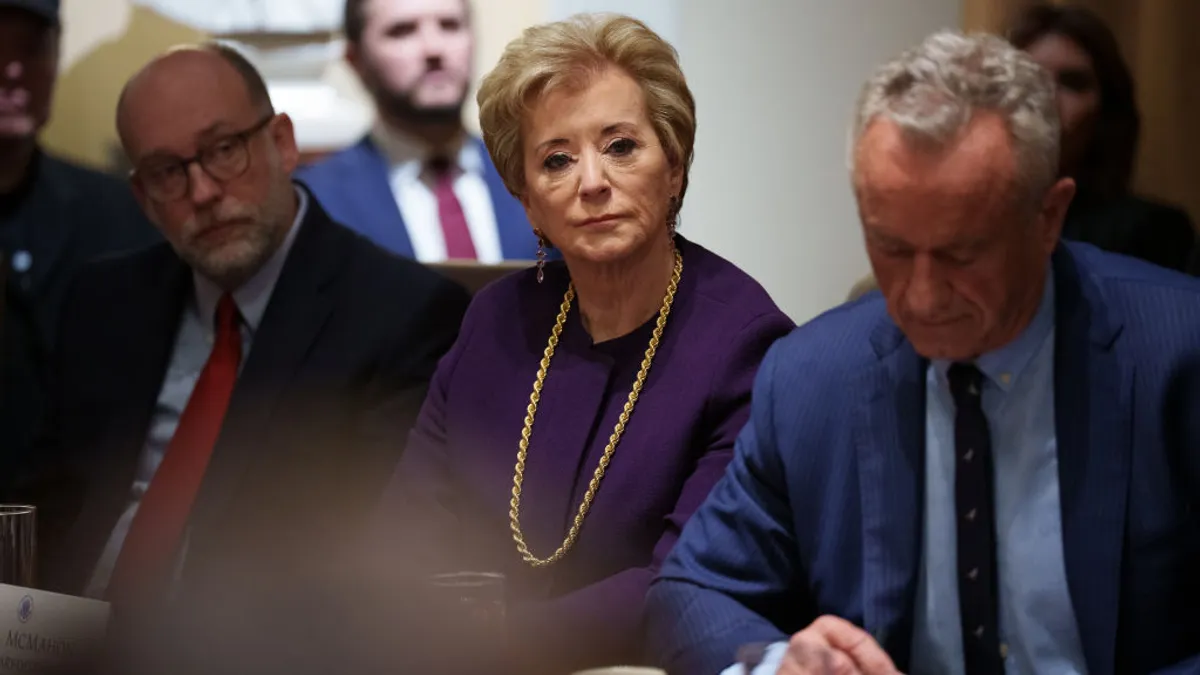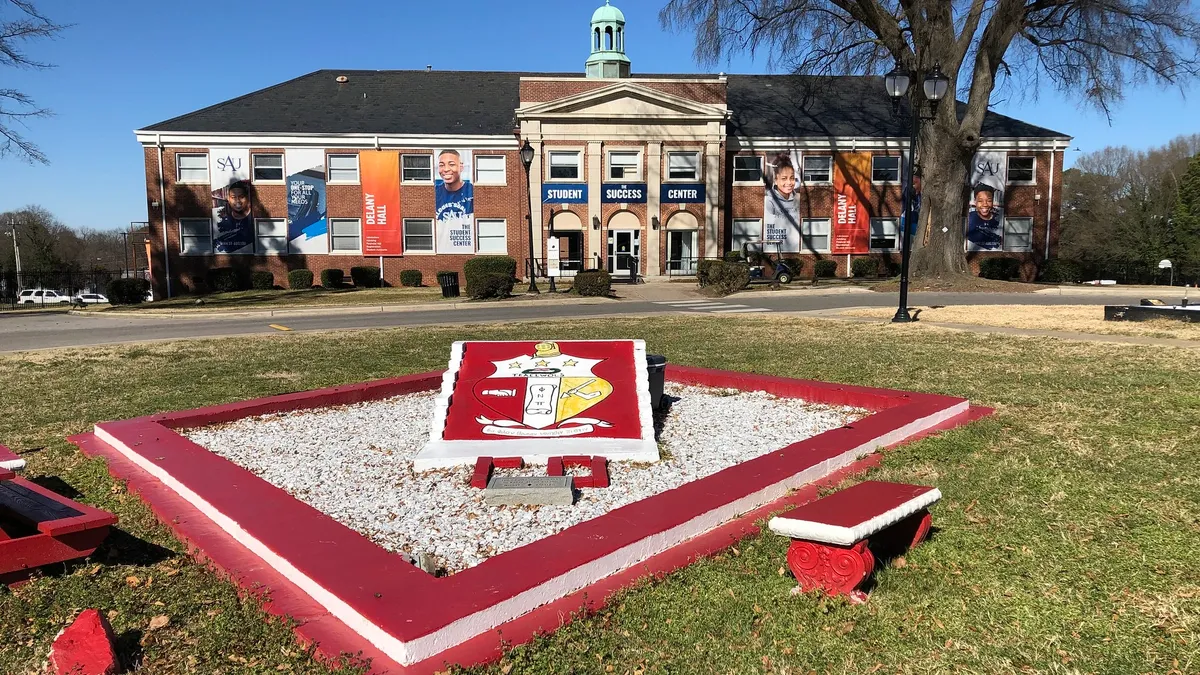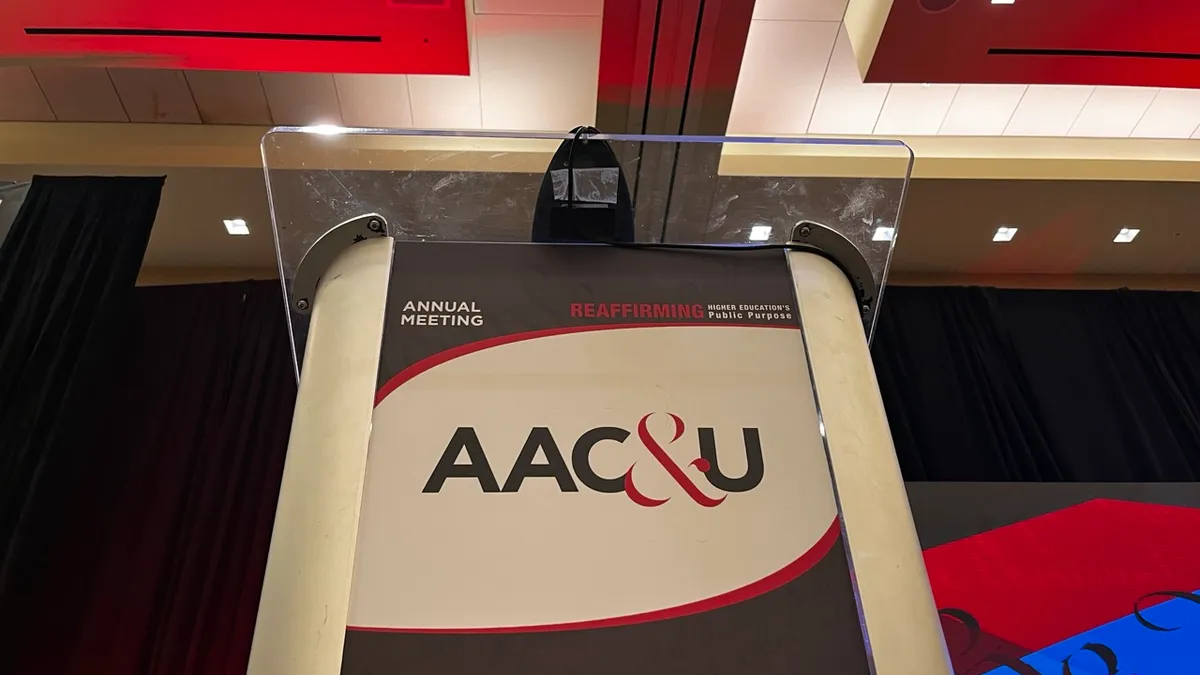Hampshire College was on the brink just a few years ago.
The liberal arts institution in Amherst, Massachusetts, which first admitted students in 1970, was long known for its focus on alternative education and self-directed study. But early in 2019 its leaders announced that they were seeking a long-term partnership in the face of financial challenges. Shortly afterward, the college's board voted not to accept an incoming class for the upcoming fall.
Those decisions prompted intense blowback, leadership turnover and efforts to revitalize the college for the future while maintaining its traditional focus on independent work and close collaboration with faculty. Hampshire ultimately did admit students in 2019, but its fall class was just 13 students — down from 273 first-year students the year before.
The college's new administration has worked to rebuild admissions operations. It's in the midst of a $60 million campaign to raise unrestricted funding for operating costs, bringing in nearly $34 million so far. And this month, Hampshire announced that 255 students made deposits as of its May 1 deadline, outpacing a goal of 240. Add in about 50 expected transfer students, and the college expects to welcome about 300 new students come fall.
Hampshire's attempted recovery comes at a time of intense concern about private nonprofit colleges, which are facing severe financial pressures. Higher Ed Dive spoke with Ed Wingenbach, who was named Hampshire's president in August 2019, about the college's rebuilding efforts and what other institutions can learn from its experience.
This interview has been edited for clarity and brevity.
HIGHER ED DIVE: Is your ultimate enrollment goal to return to pre-2019 levels?
ED WINGENBACH: Our eventual goal is to exceed that number. We would like to, over the course of the next three to four years, be getting entering classes in the mid- to high 300s so that we can build back to an enrollment that's closer to 1,100 or 1,200.
What was total enrollment this year?
We're about 470, on average, for the year. Next year we would expect to be maybe 510 to 520, depending on how retention shakes out.
The entering fall 2019 class was 13 first-year students. We did better the following year, But this next year's senior class is that really tiny entering class. When they graduate next year, and if we bring in 300 students the following year, we would then jump into the 700 range and then the following year we should be close to our target.
What have you done to rebuild your admissions numbers?
The rebuilding involved a lot of hiring, and hiring in ways that are really intentionally focused on finding people who wanted to be creative and were eager to try to be advocates for the unique and experimental approach that Hampshire provides. There was kind of an opportunity there to rebuild an enrollment operation that is explicitly centered around the values and missions of the institution and excited about the new innovations to the curriculum that we were trying to push through.
That's one. Two, we really changed the way that admissions here collaborated with and worked with marketing. And we invested quite a bit in trying to rethink the way that Hampshire communicates its distinctiveness externally in ways that we're not afraid to potentially put off as many people as we pulled in.
We had this consistent refrain that, "If 30% of the people who see this don't say, 'Oh my God I don't want to do that,' we're probably not doing it right." It was a real focus on trying to identify and appeal to the students who would be most interested in the kinds of things we're doing.
And third, it was adopting the digital and data-based practices that a modern enrollment operation really has to have down pat.
The college has said it was able to make inroads with students who haven't traditionally attended Hampshire — from states like Arkansas, Nebraska, Utah, South Carolina and Kansas. And 29% of the incoming class identifies as Black, Indigenous and people of color. How did you make that happen?
The strategy or tactic of being very, very clear about our distinctiveness means that when we get in front of people, we tend to hold onto their attention better.
In terms of diversifying places where we haven't normally seen students, I think a lot of that emerges from the kind of focus on modernizing our use of data — and targeting and understanding student demographics so that we were able to find places outside of our traditional markets that looked like the kind of places that would have students who might be interested in Hampshire.
Did the pandemic make this process easier or harder?
I think it made it harder for everyone. It made travel difficult, and it made it harder to bring people to campus. We were particularly careful about COVID and continue to be particularly careful. Because the most reliable way to attract students is to get them to visit your campus, and people are reluctant to travel, there were some challenges there.
Did it change what you see from prospective students?
This is more intuition than fact, but I think that the experience of the pandemic for many students made them more attracted to the idea that their undergraduate education should immediately connect to the questions and challenges that they care about.
They see all these problems that are out there in the world like climate change and white supremacy and community traumas and the uneven impact of the pandemic and think, "These are the kinds of things that we should be working on. I don't want to have to wait four years and then go to graduate school and then wait three years before I can start doing that work."
And I think many of these students' experience in the pandemic often involved a lot more self-directed work, because they were more open to the idea or interested in the idea of going to a college that gave them more control over their own direction and curriculum.
Has rebuilding taught you lessons that might be applicable to other colleges?
Yes. Some, if I had a time machine, could have been recommendations for what should have been done at Hampshire prior to 2019.
For, certainly, small colleges, you have got to be very clear about what you do well and how what you do well matters — and how what you do well that matters is something you can't do other places.
What does that mean in terms of what people can actually do? Well, at Hampshire, in the fall of 2019, as we were beginning this recovery process, we enlisted people from across the college — faculty, staff, students, alums, parents — and did this really intensive work to imagine, "What would be the most distinctive, interesting, exciting future for Hampshire that would matter to the world and be consistent with our mission?"
Let's agree on what that is. Let's do this rigorously and sort through our options but agree on what that's going to be.
What does that look like in practice?
Our faculty and students and staff worked together to say what are the four questions we want to really build our curriculum — both academic and co-curricular — around over the next couple of years?
These can change over time.
The four questions that we generated were: How do we act on our responsibilities in the face of a changing climate? How can creative practices address trauma, both individual and collective? How can we disrupt and dismantle white supremacy? And how do we understand truth in a post-truth era?
Think about everything that's facing our world right now and our society and the things our students care about. These are the kind of core questions. Those are things people care about, and so giving students an opportunity to come to a college where you can use sociology and chemistry and philosophy and geology and all of those various disciplinary tools to try to get together to get purchase on how we might actually make progress on these really core questions, that's what a liberal arts education should be about.



